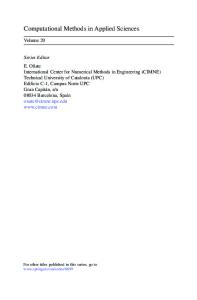A Review on Recent Advances in the Constitutive Modeling of Bone Tissue
- PDF / 696,871 Bytes
- 9 Pages / 595.276 x 790.866 pts Page_size
- 39 Downloads / 302 Views
BIOMECHANICS (G NIEBUR AND J WALLACE, SECTION EDITORS)
A Review on Recent Advances in the Constitutive Modeling of Bone Tissue Dieter H. Pahr 1,2 & Andreas G. Reisinger 2 Accepted: 29 September 2020 # The Author(s) 2020
Abstract Purpose of Review Image-based finite element analysis (FEA) to predict and understand the biomechanical response has become an essential methodology in musculoskeletal research. An important part of such simulation models is the constitutive material model of which recent advances are summarized in this review. Recent Findings The review shows that existing models from other fields were introduced, such as cohesion zone (cortical bone) or phase-field models (trabecular bone). Some progress has been made in describing cortical bone involving physical mechanisms such as microcracks. Problems with validations at different length scales remain a problem. Summary The improvement of recent constitutive models is partially obscured by uncertainties that affect overall predictions, such as image quality and calibration or boundary conditions. Nevertheless, in vivo CT-based FEA simulations based on a sophisticated constitutive behavior are a very valuable tool for clinical-related osteoporosis research. Keywords Constitutive model . Material law . Bone tissue . Trabecular bone . Cortical bone . Review article . Finite element
Introduction The Biological Material “Bone” Bone is a living material, organized in a fascinating microstructural hierarchy [12, 37]. Besides its purpose as a mechanical support for the musculoskeletal system, it serves as a calcium reservoir [7], and a container for bone marrow. Bones in the human body consists of two distinct structures—the compact cortical shell and the spongy trabecular (or cancellous) region on the inside (Fig. 1). Cortical thickness ranges from several tenths of a millimeter to some millimeters in humans, while a trabecula is typically around 50–300 μm thick [37]. Individual trabeculae assemble to form foam-like structures with a typical bone volume fraction of 5–30% depending on anatomical
This article is part of the Topical Collection on Biomechanics * Dieter H. Pahr [email protected] 1
Institute of Lightweight Design and Structural Biomechanics, TU-Wien, Vienna, Austria
2
Department of Anatomy und Biomechanics, Karl Landsteiner University of Health Sciences, Krems, Austria
location and age [48]. In cortical bone, Haversian and Volkmann channels, lacunae, and canaliculae lead to a cortical porosity of 4–17% depending on age [2, 3, 6]. The underlying microstructure of bone consists of lamellae of 3–6 μm thickness that arrange as osteons in compact bone and as lamellar packets in trabeculae [14, 35, 39]. Those lamellae are formed from bone fibrils—a highly aligned and organized staggered arrangement of bone’s basic constituents: collagen type I molecules, hydroxyapatite mineral platelets, water, and a small fraction of non-collagenous proteins [10, 50]. This complex hierarchical structure, alongside with the chemical composition, leads to the r
Data Loading...











